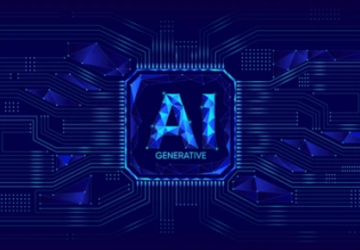Digital tools offer businesses in the industrial sector opportunities for optimizing business processes, which are essential to integrate in order to increase the profitability of projects and remain competitive.
However, the organizational changes brought about by digital transformation present challenges if the specificities and constraints of the industry are not properly taken into account. That’s why it’s essential to address the organizational challenges of digital transformation to successfully combine industrial heritage with innovative solutions.
Addressing the organizational challenges of digital transformation.
The mistake made by many companies is to reduce digital transformation to a technological issue. It is primarily an organizational challenge that can be addressed by first modeling business processes.
Digital transformation: much more than just a technological issue.
- Digital transformation is not just about adding new technological tools; it’s primarily about deeply evolving business processes and the organization of the company as a whole. It’s a complex process that can cause frictions if not steered in the right direction and properly implemented. In this regard, the human factor and the desire to spread a culture of innovation are at the heart of any digital transformation project.The frictions that can arise from integrating digital technology often come from the fact that traditional industrial processes have unique specificities and constraints:
- Strict regulations: Safety, quality, and environmental standards can hinder the adoption of new technologies.
- Precision and reliability: Technological failures can result in significant costs and safety risks, making the adoption of unproven new technologies challenging.
- Data security and protection: The integration of new digital technologies increases the attack surface for companies, thus leading to potential security and data protection issues. This challenge is especially significant for companies dealing with sensitive information. Therefore, any digital technology must be carefully assessed and secured to minimize these risks.
- Process complexity: Industrial processes can be extremely complex, involving many steps, machines, and employees. This complexity requires careful planning and change management.
- Capital invested in existing equipment: Industrial companies have often invested significant amounts in their existing equipment and infrastructure. Therefore, the return on investment for modernizing equipment and infrastructure must be demonstrated.
Business process modeling in support of organizational changes.
In order for the integration of digital technologies to improve the profitability of your industrial company, it is essential to consider how you can transform your business processes. To do this, the first step is to have a clear vision of these processes by modeling them accurately and comprehensively. This process modeling (or workflow) allows for the representation and understanding of all tasks, stages, and resources (human, financial, and material) that make up each process.
Take the example of a maintenance process in the aerospace sector: traditionally, regular inspections, often based on predefined time intervals or flight hours, may require the aircraft to be taken out of service, resulting in downtime costs. By modeling this workflow, optimization opportunities can be identified. A digital twin (an exact virtual replica of the plane) allows for real-time monitoring of the performance of all the aircraft’s systems. If a deviation from expected performance is detected, an alert is generated, thus accurately targeting maintenance operations. By avoiding unnecessary inspections and anticipating potential failures, the use of the digital twin can improve maintenance efficiency, reduce downtime costs, and enhance profitability.

Successfully bridging industrial heritage and digital transformation.
The pursuit of profitability is the driving force behind any digital transformation project. To ensure this profitability, it is essential to target the processes to be optimized, to include transformation actions in a roadmap, and to provide the means for this transformation by forging partnerships.
Target the business processes to optimize.
To improve the profitability of a digital technology industrial project, the first step is to identify the friction points in business processes: loss of time, errors, inconsistencies, duplicates, communication difficulties, etc. Digital technology is justified as soon as it solves a clearly identified problem and this optimization is profitable. In other words, digital transformation should be driven by the desire to solve problems in business processes and by a constant search for return on investment.
The digital twin technology can be used to optimize several business processes throughout the lifecycle of an industrial product. In the aerospace sector, for example, the digital twin transforms the processes at work during the design phase, replacing tests with simulations, especially to anticipate the behavior of components and the system as a whole under various scenarios. The digital twin also optimizes processes related to manufacturing, assisting in decision-making based on the characteristics of the project (time/budget constraints, availability of stakeholders or materials, regulatory constraints, etc.). Similarly, a digital twin transforms the processes related to keeping operational (MCO) by integrating preventive maintenance. These organizational changes reduce costs and improve the profitability of the industrial project.
Create a roadmap for digitalization.
Once these application areas are identified, it is crucial to develop a roadmap to guide digital transformation. This roadmap should define the key steps of the transformation, the technologies to implement, the necessary resources, and the performance indicators to monitor in order to measure the effectiveness and impact of the digital transformation in the company.
The development of this roadmap is based on the analysis of existing industrial processes and the expected effects within the context of integrating digital technologies. For example, in the case of a nuclear power plant, the roadmap for the implementation of a digital twin would include the following points :
- Initial Assessment: Identifying business processes altered by technology (monitoring reactors, maintenance of cooling systems, etc.)
- Objectives: The project should target SMART (specific, measurable, achievable, relevant, time-bound) objectives. This could be a reduction in unplanned downtime or an extension of equipment lifespan.
- Design of the Digital Twin: This phase depends on the specifics of the project because the deployed tool must be customized. In any case, it is essential to model the business processes to optimize and connect to all the project’s data sources.
- Implementation: Integrating the digital twin into the project involves tasks such as deploying sensors, establishing data connections, or training staff on the tool’s use.
- Continuous Evaluation: After implementation, monitoring of KPIs is necessary to ensure that the digital twin operates as expected and delivers the anticipated benefits.
Establish strategic partnerships to accelerate innovation
Forging partnerships with digital solution providers is a wise decision to successfully merge your industrial legacy with the digital world. Such collaborations can grant access to invaluable technical expertise, offer co-innovation opportunities, and help overcome the inherent challenges of digitalization. It’s also a way to foster a culture of innovation within the company, stimulating idea sharing and mutual learning. In this light, it’s crucial to choose partners who share your vision of innovation and have a deep understanding of digital technologies and their applications in the industrial sector.
The digital transformation of industrial processes is essential for improving the profitability of projects. Through process optimization, digitalization brings greater efficiency, better anticipation of problems, and opportunities for innovation. However, to successfully merge industrial heritage with digital innovation, one must follow a clearly defined strategy and skillfully combine business and IT expertise.
Better understand the possibilities of SmartShape?
Schedule a demo

